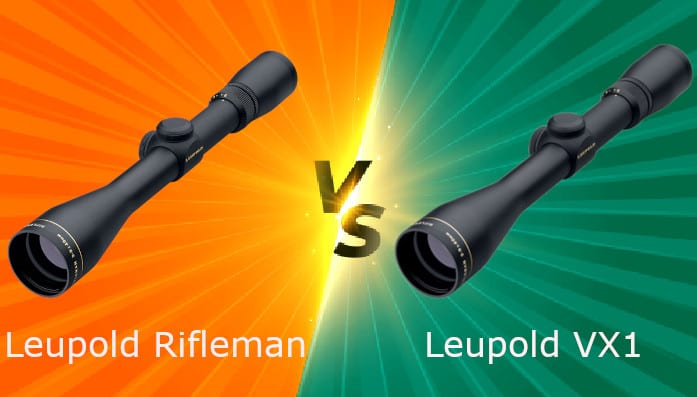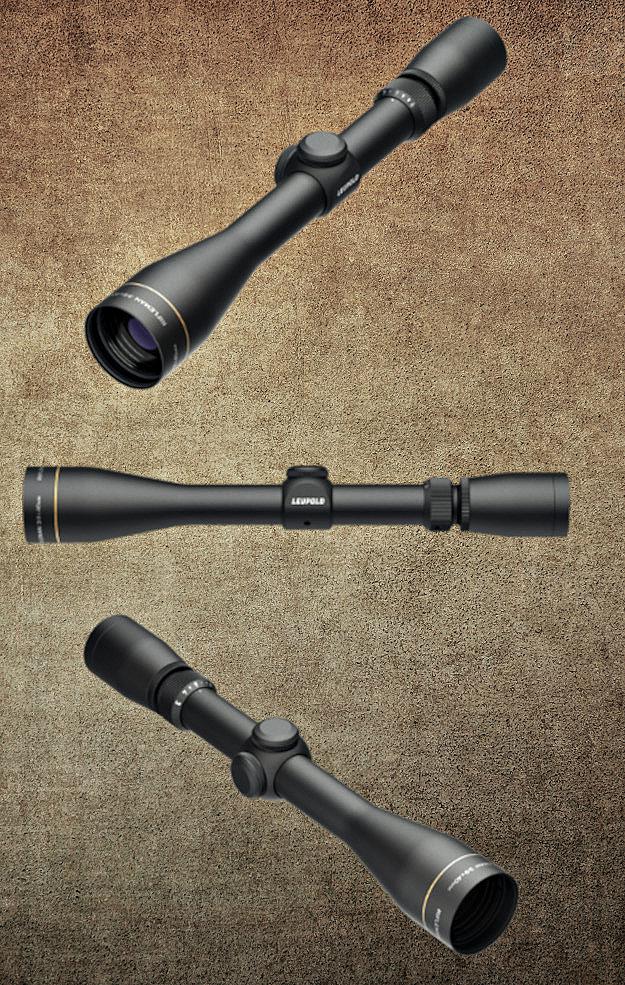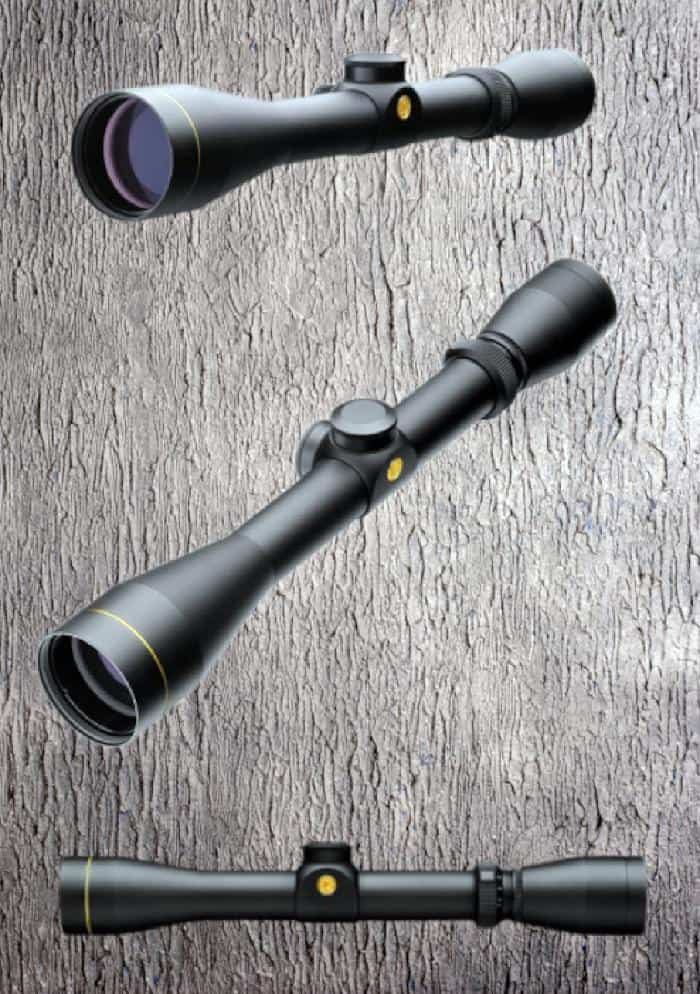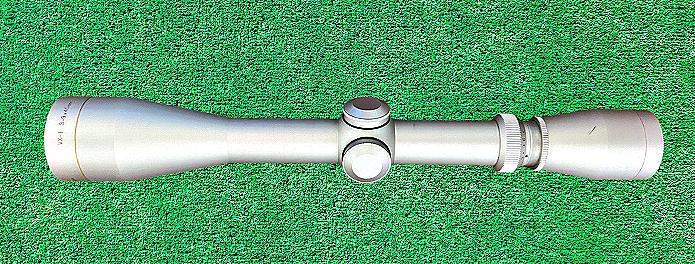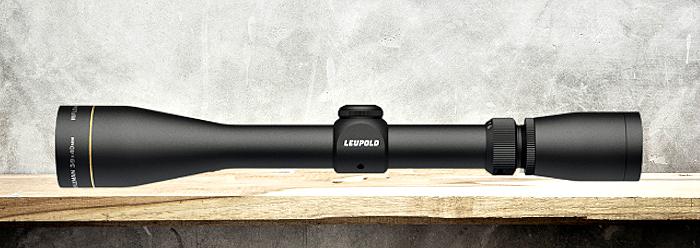As an Amazon Associate I earn from qualifying purchases. Amazon and the Amazon logo are trademarks of Amazon.com, Inc, or its affiliates.
Trying to compare scopes from two different scope makers is always a challenge as it may not be an apples-to-apples comparison. However, at my day job, I’m routinely asked to compare one scope to another or asked if scope X is better than scope Y? I recently received an email from someone asking me to compare two out-of-production Leupold scopes: the Leupold Rifleman vs VX1 series of scopes. Since this is not the first time this comparison question has been posed, I decided to go ahead and create a post trying to answer the question.
Leupold Overview
Founded in 1907, Leupold is one of the oldest sporting optics brands in the United States. Although they are most commonly called “Leupold,” the company’s official name is Leupold & Stevens, Inc. Many people are surprised to learn that, when Leupold was first founded, it was called Leupold & Voelpel, and specialized in repairing survey equipment.
The company did not start producing rifle scopes until 1947 when they introduced the Plainsman scope. The success of the Plainsman and other early model Leupold optics led them to expand the rifle scope line. In 1962, Leupold designed the Duplex reticle style, which has become an industry standard for reticles.
Initially, Leupold focused on the hunting market and primarily offered scopes geared towards hunting. Late, they would expand the optics division to include target and tactical-based optics. Some of those tactical scopes would win several military contracts in the U.S. Army, Navy Seals, Navy, and Marine Corp. In addition, Leupold would also become a go-to brand for local, state, and federal law enforcement.
Leupold became the most popular optics brand in the U.S., offering riflescopes, red dot sights, spotting scopes, binoculars, rangefinders, and scope mounts.
Currently, Leupold & Stevens offers six series or families of scopes, which include the following:
- FX Series (which are only fixed power scopes)
- VX-Freedom
- VX-3HD
- VX-5HD
- VX-6HD
- Competition Scopes
- Handgun Optics
- Mark 3HD
- Mark 5HD
- Mark 6
- Mark8
For the purposes of this post, I’m going to be focusing on the Rifleman and VX1 series.
Overview of the Leupold Rifleman Scopes
Since 2003, Leupold has introduced two different versions of the Rifleman line of scopes. The first Rifleman scopes were offered from 2003 to 2012. Then, in 2015, Leupold introduced a 2nd generation of the Rifleman scopes. That 2nd version of the Rifleman model was sold until the end of 2019.
For simplicity’s sake, I’ll be referring to the two versions as Rifleman 1st generation and Rifleman 2nd generation.
Rifleman Scopes (1st Generation)
The 1st generation of Rifleman scopes was introduced in 2003 and was Leupold’s first foray into a more budget-friendly scope option for hunters. The Rifleman scopes are a repackaged and renamed version of the Leupold Vari-X II scopes, which were discontinued in 2001.
The Rifleman optics were built on a 1-inch tube and were originally offered in the following configurations:
- 2-7×33
- 3-9×40
- 4-12×40
- 3-9×50 (added in 2005)
- 2-7×33 Shotgun/Muzzleloader (added in 2006)
- 3-9×40 Shotgun/Muzzleloader (added in 2006)
In 2005, Leupold added a 3-9×50 model to the Rifleman series designed for low-light hunting. In addition to the new 3-9×50 scope, they also introduced a matching set of rings and bases called “Rifleman Rings.” Like the Rifleman scopes, the Rifleman rings were also a more budget-friendly option than the other Leupold scope rings.
In 2006, Leupold expanded the Rifleman series by adding two specialty scope models: a 2-7×33 and a 3-9×40 variant built for use on a shotgun or muzzleloader.
All the Rifleman series of scopes had the following features:
- 3:1 Magnification ratio
- Initially, the only reticle option for the Rifleman models was Leupold’s Wide Duplex reticle. In 2011, Leupold started offering the 3-9×40 model with a choice of the wide duplex or Leupold’s Rifleman Ballistic Reticle.
- The lenses were identified as fully multi-coated but obviously were not the same lens coating used on the higher-end Leupold models.
- All were only available in a matte black finish.
- All had eye relief in the 3.7 inches to 4.2 inches range.
- These models featured a fixed 100 yard parallax setting.
- Used an elevation and windage adjustment system built on 1/2 MOA at 100 yards.
- All were manufactured in the USA at the Beaverton plant, and all Rifleman scopes were covered under Leupold’s lifetime warranty.
The first series of Rifleman scopes was discontinued at the end of 2012.
Rifleman Scopes (2nd generation)
In 2015, Leupold reintroduced a 2nd generation of the Rifleman series in nearly the same configurations as the 1st generation. This generation is a renamed and rebadged version of the Leupold VX-1 line of scopes with a few upgrades. This series initially consisted of the following models:
- 2-7×33 (was discontinued in 2019)
- 3-9×40
- 3-9×50
- 4-12-40
The 2nd generation of the Rifleman models was built on a 1-inch, one-piece tube made from 6061-T6 Aircraft quality aluminum. This tube configuration differs from the VX-1 models constructed with a two-piece tube.
This version of the Rifleman series was only available in a matte black finish, and the only reticle choice was the Wide Duplex option.
Leupold discontinued the 2nd generation of the Rifleman scopes at the end of 2019.
Overall, the Rifleman scopes were considered a success for Leupold, but they caused quite a bit of confusion in two areas:
- When they were marketed and sold in conjunction with the Leupold VX-I and VX1 scopes.
- When the Rifleman series was phased out and then reintroduced later.
Overview of the Leupold VX1 and VX-I Scopes
Technically speaking, Leupold featured two different versions of the VX-one series of scopes. The early model VX-one scopes were labeled as the VX-I (with a roman numeral one), and the name was later changed over to the VX1 (with the number 1).
Since the VX-I and VX1 are so similarly named, I’m going to provide a little background about each to clarify the differences between the two VX-one series.
Leupold VX-I
The VX-I series of optics was introduced in 2002 and was marketed as an entry-level hunting scope with all the essential features that made Leupold an optical leader. This scope series utilized features and technology from the LEupold Vari-X II and Vari-X III scopes.
This series consisted of the following models:
- 2-7×33
- 3-9×40
- 4-12×40
- 3-9X50 (added in 2004)
- 1-4×20 Shotgun (added in 2005)
- 2-7×28 Rimfire (added in 2005)
- 2-7×33 Shotgun (added in 2005)
Initially, the VX-I models were only available with the Leupold standard Duplex reticle and featured a gloss black finish. These scopes featured Leupold’s traditional multi-coated lens system, which was marketed as offering an 86% light transmission. In addition, the main tube on these models was built from two pieces, whereas Leupold used a one-piece tube on the VX-II series and higher.
The VX-I scopes featured an eye relief ranging from 3.7 inches to 4.3 inches. These models were built with a standard focusing eyepiece, while higher-end Leupold models had the fast focus eyepiece. The VX I series used a micro friction turret adjustment system built on a ¼ MOA and offered a range adjustment topping out at 52 MOA.
When the VX-I 3-9×50 model was introduced, it was available with a wide or standard duplex and in a gloss or matte finish.
In 2005, Leupold expanded the VX-I series by making specific scopes in the series available in either the wide duplex or standard duplex. In addition, in 2005, they added three new models for specialty uses: a 1-4×20 shotgun version, a 2-7×28 rimfire model, and a 2-7×33 Shotgun model.
The VX-I models were officially discontinued and replaced with the Leupold VX1 models in the middle of 2012.
Leupold VX1
In July 2012, Leupold introduced the VX1 series of optics to replace the VX-I series of scopes.
When the VX1 models were introduced, they consisted of the following offerings:
- 2-7×33 (this model was offered in a choice of gloss finish or matte finish, with the following reticle options: duplex, wide duplex, L.R. duplex, heavy duplex, or Turkey Plex.
- 3-9×40 (this model was offered in a choice of gloss finish or matte finish, with the following reticle options: duplex, wide duplex, L.R. duplex, or heavy duplex. In addition, this version was also offered in a silver finish and a Mossy Oak Tree Stand finish.
- 3-9×50 (this model was offered in a choice of gloss finish or matte finish, with the following reticle options: duplex, wide duplex, or L.R. duplex).
- 4-12×40 (this model was offered in a choice of gloss finish or matte finish, with the following reticle options: duplex, wide duplex, or L.R. duplex)
The VX1 series included the following features:
- Multicoat 4 lenses coating with 92% light transmission and Leupold’s Quantum Optical System
- Like the VX-I, these VX1 models were equipped with finger adjustable elevation and windage adjustments in ¼ MOA with a 52 MOA maximum.
- The main tube is a two-piece unit in a 1-inch configuration only.
The VX1 family of scopes was discontinued at the end of 2015 and reintroduced in 2016 as the Leupold Rifleman series with a few product upgrades in quality.
Comparing the Leupold Rifleman Scopes to the Leupold VX1 and VX-I Scopes
Typically, when comparing scopes, I try to utilize the following comparison topics in the following format:
- Optical Quality
- Tube Size
- Focal Plane
- Reticle Options
- Operational Controls
- Cost
- Country of Origin
Let’s get started:
Optical Quality
Because these two scopes were similar across the board, the waters get a little muddy when comparing the optical quality.
Let’s look at the glass quality on a more granular level:
1st generation Rifleman vs. VX-I scope
Having looked through both scope models, the VX-I scope has slightly better optics compared to the 1st generation Rifleman scopes. In addition, the image quality and color are just a bit better, which makes sense as the Rifleman costs less than the VX-I scopes.
1st generation Rifleman vs. VX1 scope
Since Leupold upgraded the lens coatings on the VX1 scopes, there’s a slight difference in optical quality when comparing the VX1 against the 1st generation Rifleman scopes. The VX1 is considerably brighter (especially in low light) and provides a clearer image.
2nd generation Rifleman vs. VX1 scope
Since these are basically the same scope, the optical quality is nearly identical. However, the 2nd generation Rifleman has a slight edge in my eyes because the optical coatings are slightly better than the ones used on the VX1.
Tube Size
Both generations of the Rifleman scopes and the VX-I and VX1 are all built on a 1-inch tube, so there aren’t any differences in tube size between the models.
Objective Size Differences
The objective size is another area where there are not any differences. The Rifleman scopes (both 1st and 2nd generation) and the VX-I and VX1 series feature the exact objective sizes within each model.
Focal Plane
Both generations of the Rifleman series and both versions of the VX1 series are built as second focal planes. However, none of these Leupold scope families features a first focal plane version.
Power Magnification Ranges
Since the Rifleman scopes and the VX1 scopes follow the same power magnification formats, these models have no magnification differences.
Reticle Options
Here’s a look at the reticle options offered within each family of scopes:
Reticle Options for the Leupold Rifleman & Leupold VX1 Scopes | |||
Rifleman (1st Generation) | VX-I | VX1 | Rifleman (2nd Generation) |
|
|
|
|
As you can see from the table above, the reticle options are very similar across both series of riflescopes. However, there were a few differences:
The Rifleman scopes were only available with the wide duplex or standard duplex. In contrast, the VX1 scopes had two additional reticle options: the L.R. reticle (which was a bullet drop compensation reticle) and the Turkey-Plex reticle, which worked well for shotguns and muzzleloaders.
Operational Controls
The operational controls for the Rifleman series and the VX-1 scopes were identical.
Eye Relief
Since the VX1 and Riflescopes were so similar from a configuration standpoint, they were built with nearly identical eye relief ranges of 3.7 inches to 4.2 inches.
I will say that I found the eye relief on the VX1 and VX-I models to be a little less critical compared to the 1st generation Rifleman scopes.
In addition, I found the eye relief on the 2nd generation Rifleman scopes to be identical to the VX1 eye relief.
Weight
After looking at Leupold’s technical specifications for each series, there are no weight differences between the different scope families.
Durability & Build Quality
When the Leupold Rifleman series was first introduced in 2003, there seemed to be some concerns that the series wouldn’t be up to typical Leupold build quality due to its budget pricing.
Although I didn’t feel that the 1st generation of Rifleman scopes was all that great, they were a solid scope that Leupold backed with its lifetime warranty program.
The VX1 models, especially the gloss finish models, felt more in line with what most Leupold fans would expect from a fit and finish perspective, and the VX1’s held up well over time.
Although I heard some grumblings from die-hard Leupold fans that the Rifleman cheapened the overall Leupold line, they did seem to be well-built scopes for the money.
Scope Color
The Rifleman series was one of the first Leupold scopes manufactured in a matte finish versus Leupold’s traditional gloss finish.
The VX1 models were available in a gloss finish or matte finish, while the 2nd generation Rifleman scopes migrated back to a matte finish.
Select models of the VX1 series were also available in a silver finish.
Costs
Since these models are so similar and Leupold reintroduced one of them, let me discuss costs on a more granular level for each series:
Rifleman (1st Generation)
Keep in mind that when the 1st generation of the Rifleman scopes came out, they were designed to go after a section of the market that was new to Leupold: riflescopes priced less than $200. So when the 1st gen Rifleman hit the market in 2003, they had an MSRP range of $125 to $200.
Over time, the MSRP went up slightly and maxed out in the $225 to $300 range, with the 4-12×40 Rifleman being the most expensive model.
VX-I
When the Leupold VX-I scopes hit the market in 2002, they had an MSRP in the $200 to $300 range, with the 4-12×40 model costing right at $300.
Over the ten years that the VX-I scopes were available, the MSRP went up slightly, but they remained a very affordable Leupold scope. When the VX-I scopes were phased out, they had an MSRP range of $260 to $349.
VX1
When the Leupold VX1 scopes hit the market in 2012, they had an MSRP range that started at $265 and topped out at $375.
Over the life of the VX1 (sometimes also written as VX-1), the MSRP range went up a bit where it started at $275 and topped out at $399.
Rifleman (2nd Generation)
When the 2nd generation of the Rifleman scopes was introduced in 2012, they featured an MSRP range that started at $225 and maxed out at $365.
In 2019, when this series was phased out, the MSRP had increased to a starting price of $250 and topped out at $390.
Country of Origin
According to Leupold, the Rifleman, VX-I, and VX1 models were all manufactured in the U.S. at the Leupold facility.
Leupold Rifleman or Leupold VX1 – Which is the Better Scope?
If we’re just talking about the better scope in general, then the VX-I and VX1 models are a better quality scope compared to the 1st generation Rifleman scopes.
However, if you were scope shopping and were trying to make a buying decision between the 1st gen Rifleman, VX-I, VX1, and 2nd gen Rifleman scopes, I’d offer the following suggestions:
- If you are strictly shopping on price and wanted the least expensive Leupold scope from that group, then the 1st generation of Rifleman scopes would be your best option.
- If you were shopping based on the best optical performance within that group of scopes, I’d suggest looking at the VX1 or 2nd generation Rifleman scopes as they feature the best optical quality.
- If you were most interested in a series with the most reticle options, then the VX-I or VX1 models would be the ones to consider.
- If the gloss black Leupold finish is crucial to you, then I’d restrict my shopping to the Leupold VX1 and VX-I models.
FAQS
Here are some commonly asked questions dealing with the Leupold Rifleman scopes and Leupold VX1 scopes:
Did Leupold offer a Leupold vx1 silver scope?
The Leupold VX1 in the 3-9×40 configuration was offered in a gloss black or silver finish. This scope was the only model in the VX1 line available in a factory silver finish (without going through the Leupold Custom Shop).
Does Leupold still make the Rifleman scope?
Leupold offered two versions of the Rifleman scope series. One version was produced from 2002 to 2012, and another version was offered from 2015 to 2019. Leupold is not currently manufacturing the Rifleman scopes.
Are Leupold Rifleman scopes any good?
The Rifleman scopes were designed as a budget-friendly, entry-level scope for hunting. However, they were well-made scopes and covered under Leupold’s lifetime warranty. They were a decent scope, but the Leupold VX1 or VX-2 were significantly better scopes for a few more dollars.
Where are Leupold Rifleman scopes made?
The Rifleman scopes were assembled at the Leupold facility in Beaverton, Oregon. When the Rifleman scopes were first introduced, their budget pricing structure made customers question whether they were made in the U.S. or produced overseas. Leupold has stated explicitly that the Rifleman scopes were manufactured in the U.S.
Are the Leupold VX-I and VX-1 scopes the same?
While the Leupold VX-I scopes and VX1 scopes are very similar, they are actually classified as two different series in the Leupold line. The VX1 models are basically a slightly upgraded version of the VX-I scopes.
I’ve been working in the firearms and sporting optics industry for over 20 years, with a personal and professional interest in all things related to rifle scopes, Through a combination of work experience, formal training, and personal experiences, I have extensive experience mounting, testing, and evaluating different rifle scope models across most major optical brands.

